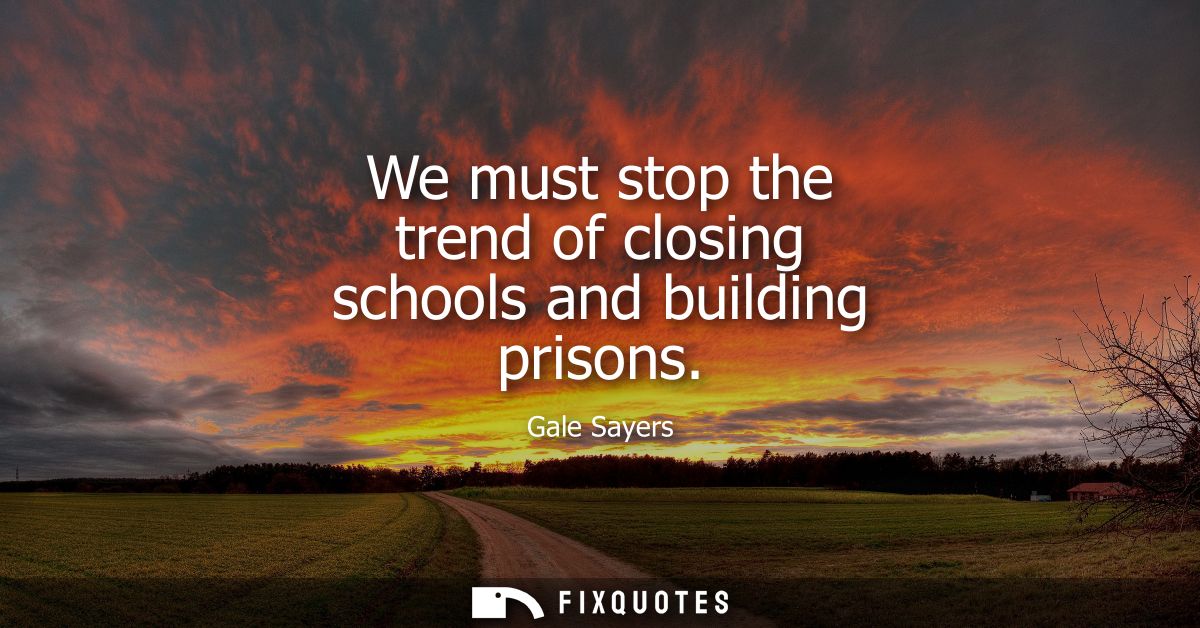"We must stop the trend of closing schools and building prisons"
About this Quote
The statement juxtaposes two institutions that signal a society’s priorities: schools as engines of possibility and prisons as monuments to failure. Calling it a “trend” implies more than isolated budget choices; it points to a pattern shaped by fear, austerity, and political incentives that valorize punishment over prevention.
Closing schools diminishes the most reliable pathway to mobility, health, and civic participation. When classrooms disappear, so do counselors, mentors, arts programs, and the daily rituals that tether young people to hope. At the same time, building prisons expands capacity for the consequences of that loss. Decades of research show education lowers crime, stabilizes communities, and yields returns far exceeding its costs, while incarceration is extraordinarily expensive and often deepens the very conditions it claims to contain. The line warns against mistaking short-term control for long-term safety.
There is also a racial and economic geography embedded here. Schools in low-income neighborhoods, disproportionately communities of color, are most likely to face closures, underfunding, and punitive discipline that funnels students into the criminal legal system. The “school-to-prison pipeline” is not a metaphor but a set of policies, zero-tolerance rules, police in hallways, exclusion for minor infractions, that redefine youthful mistakes as criminality. Meanwhile, prison construction can be sold as jobs and growth, especially in rural areas, further entrenching the carceral economy.
The moral claim is simple: build the conditions for flourishing rather than expand capacity for despair. Public safety is strongest where opportunity is abundant, where mental health care is accessible, where classrooms are vibrant and inclusive. The point is not to deny the need for accountability but to insist that dignity, education, and belonging are the surest crime-prevention tools we possess. Choosing schools over cells is a choice to nurture futures rather than manage failures, an invitation to measure success not by how many people we can lock away, but by how many we empower to thrive.
More details
About the Author

